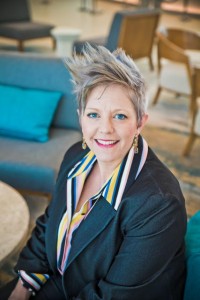If you are a woman on an executive team in the cannabis industry, you’ve probably noticed a decrease in fellow female co-workers since the start of 2020.
According to a Special Report from MJBizDaily, the percentage of female executives in cannabis has been on a rollercoaster ride. In 2015, 36% of executive positions were held by women, which dipped to 26.9% in 2017, then back up to 36.8% in 2019 only to drop to a new all-time low of 22.1% in 2021. These numbers are significantly below the national average of females in leadership at all U.S. businesses, which lands at 29.8%. With the COVID-19 pandemic disproportionately impacting women in the workplace, we can safely assume this as a factor.
In an era where societal awareness of social equity needs is growing, as evidenced by recent local legislative changes to foster social equity with cannabis delivery businesses, there still remains significant opportunity for improvement in workplace gender equality. But hiring women isn’t just a task for your DEI checklist – it also makes good business sense.
READ — A budding relationship between cannabis and real estate
Research shows that when you add more women to senior leadership roles, you can expect more significant profits, better customer experiences, heightened social responsibility and higher-quality customer experiences with an emphasis on safety.
As the saying goes, “If you want to change the world, start in your backyard.” As a female executive leader in human resources at Denver-based Native Roots Cannabis Co., a vertically-integrated operator with 20 locations throughout Colorado, I understand personally and professionally why gender equality in the workplace is important – and why positive change is so meaningful. You can’t be what you can’t see.
It is a privilege to work with the star-studded Native Roots executive team that is 57% female. Chief Operating Officer Beth Kotarba received the C-Suite Award from Denver Business Journal, a highly-competitive distinction that recognizes C-suite executives outside of CEOs who have demonstrated vital leadership and business savvy to implement their company’s vision. Kotarba’s accomplishments include guiding the company’s growth in size, complexity and consumer footprint while also implementing policies to expand opportunities for women within the company and creating programs that foster learning, teamwork, and employee appreciation. She also led the implementation of environmentally conscious practices and technology, and served an instrumental role in 30% revenue growth over the past five years.
READ — TARRA: A New Way for Women to Work
Chief Sales Officer Denise DeNardi was selected this year as an Outstanding Woman In Business from the Denver Business Journal. Rising above in a highly competitive nomination process, honorees were appraised by an editorial panel based on nominees’ leadership within their organization and industry, career accomplishments and community involvement. De Nardi is one of only two women from the cannabis industry honored this year. In her role at Native Roots, De Nardi develops ongoing strategies and oversees performance for multiple revenue channels. Under her leadership, the company increased its top line revenue to ensure margin protection; developed and implemented an internal sales structure to achieve company objectives; and embraced a company culture that champions continuous experimentation to drive growth, elevate the brand experience and enhance customer engagement.
Achieving these notoriously competitive recognitions is a challenge, with only the most talented of executives being named. Securing recognition of two with female executives in the cannabis industry for a mainstream highly-esteemed regional business honor signals a shift in both the perception of the industry and gender in leadership.
Gender workplace changes are also happening outside the executive team. Production and management, two departments historically staffed by male employees, are now more balanced after hiring or promoting qualified female candidates. This includes roles such as bay manager, head grower, facility manager, director of supply chain and senior manager. These changes happened with the mentorship and guidance of the executive team supporting talented female staff looking to advance.
Working in your “backyard” is a start; driving change in your community comes next. Our executive leaders are passionate about advancing the industry towards success. De Nardi teaches a 10-week course at The Color of Cannabis, a nonprofit organization devoted to helping people of color enter, thrive and advance within the industry. DeNardi and Kotarba are also mentors with the Marijuana Industry Group in a program established to promote diversity and inclusion in the Colorado cannabis industry by fostering relationships between social equity entrepreneurs and established cannabis business leaders.
While we are proud to have covered some ground on this journey, we are just getting started. We must continue to engage with our community, community partners and industry partners around the incredible opportunities the cannabis culture can provide all individuals, regardless of gender identity. Our goal is to have a culture of diversity and inclusion that threads through everything we do. The only way to make this happen is to ensure people of all backgrounds are represented. We are committed to the journey.
Do you want to see more change in your workplace? Creating a committee – women in business; diversity, equity and inclusion; social justice; accountability – is a good start to harness like-minded individuals looking to drive change. Plant the seeds of change now, and you will see your “backyard” grow with the fruits of your labor.
 Adria Hamberger is the vice president of human resources at Native Roots Cannabis Co., Colorado’s largest privately-owned vertically-integrated operator with 20 dispensary locations in the state. She brings 25 years of management experience to her role. At Native Roots, she leads the team that develops and maintains company culture, creates HR plans and strategies, implements talent strategies and provides insight around people initiatives.
Adria Hamberger is the vice president of human resources at Native Roots Cannabis Co., Colorado’s largest privately-owned vertically-integrated operator with 20 dispensary locations in the state. She brings 25 years of management experience to her role. At Native Roots, she leads the team that develops and maintains company culture, creates HR plans and strategies, implements talent strategies and provides insight around people initiatives.




